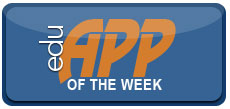Autonomous learners. What are they? Who are they? And, do we have any of them in our classes? As is often the case with teaching and learning terms, there is not a lot of definitional clarity. In this blog and elsewhere I have tended to used the terms autonomous learner, self-directed learner and independent learner pretty much interchangeably. It seems to me that’s what happens elsewhere in the literature as well.
Read more ›CURRENT ARTICLE • April 04
OTHER RECENT ARTICLES
The article that proposes these active-learning strategies is written for faculty who teach large-enrollment biology courses. But large courses share many similarities, and strategies often work well with a variety of content. Even so, most strategies need to be adapted so that they fit well with the instructor’s style, the learning needs of the students, and the configuration of course content.
Read More ›I have always enjoyed watching YouTube videos and when I noticed that some of the videos dealt with serious literary topics and had re-enactments of Shakespeare plays, I began to wonder if I could incorporate them into my literature classes. Instead of students just reading a text version of Othello, why not have them also watch a live performance of Othello to get them more motivated to learn literature?
Read More ›We know from the literature, and more directly from conversations with colleagues, that most college teachers are concerned, annoyed, frustrated, and occasionally angered by the way students behave in the classroom. But are these behaviors of concern to other students in the classroom?
Read More ›I have to admit I’ve never been a terribly big fan of teaching awards. I know, teaching isn’t rewarded and recognized as it should be, so why in the world complain about something that does honor teaching excellence? Let me explain my concerns.
Read More ›A review of the research on active learning compiled for physiology faculty contains five “key findings” that author Joel Michael maintains ought “to be incorporated [into] our thinking as we make decisions about teaching physiology [I would say, name your discipline] at any educational level.” (p. 160) Here’s the list, along with a brief discussion of each.
Read More ›Digital Natives are all around us. They populate our college courses and use the newest mobile technologies to communicate, collaborate, create and share information on social media sites. There is, however, often a disconnection on their path to learning. Quite often we find Digital Native students taught by Digital Immigrant professors (Prensky, 2001) who fear, dismiss or are unaware of the potential learning power of Web 2.0 technologies.
Read More ›
|
I have never been truly impressed with text-to-speech software but I was mildly surprised with the Dragon Dictation app. Dragon Naturally Speaking software for the PC has been around for some time and I well remember spending a lot of time training the software to recognize my voice and speech patterns, something I do not care to do again.
In the case of this app, however, that was not necessary. I downloaded the app, started speaking and the translation to typed text was a fairly accurate representation of what I said. It was not 100% correct but close enough for me to continue using the app. The onboard microphone worked well but I had better performance using a USB microphone plugged into Apple’s iPad Camera Connection Kit (keep in mind that Apple does not support USB microphone connection to their dongle but other testers had the same result I did, the USB mic does work).
The app is really easy to use. Tap the app and you are presented with a ‘record’ button at the center of the screen. ‘Tap and dictate’ and Dragon starts recording your voice. Tap the same area to stop and, after processing your recording, Dragon spits out the text conversion. You can add to a recording, make a new recording, delete recordings, e-mail, copy, change settings or post to a couple social networks. Editing text is fairly simple, touch a word and Dragon offers suggestions or the option to delete the word. The interface is quite simple but you will have to put up with a Dragon banner at the bottom of your screen which cannot be covered up or turned off—something you have to live with for a neat free app. Oh, one last thing, Dragon will only run with Wi-Fi enabled.
Summary:
Dragon Dictation has a fairly clean interface and the app is very easy to use. No voice training is required. The app has a helpful set of tips for using Dragon Dictation—new paragraph, new line, equal sign, etc. Best of all, the app is free! Speak and Dragon Dictation converts your speech to text. There are language options for non-English speakers and I found that the app worked very well even with my accent! There are several text to speech apps and a number of voice recording apps. However, there appears to be few speech to text apps available.
Dave Yearwood, associate professor and chair of the technology department, University of North Dakota.
Read More ›Barbara Zuck, assistant professor of business at Montana State University–Northern, was teaching a 100-level online course in business leadership and wanted to understand her students’ experiences in the course. So at the end of the course she asked students three open-ended questions:
Read More ›Thinking developmentally is one of those instructional design issues that we don’t do often enough. We understand that different learning experiences are appropriate for students at different levels. We expect a higher caliber of work from seniors than from those just starting college. But how often do we purposefully design a progression of learning experiences?
Read More ›





